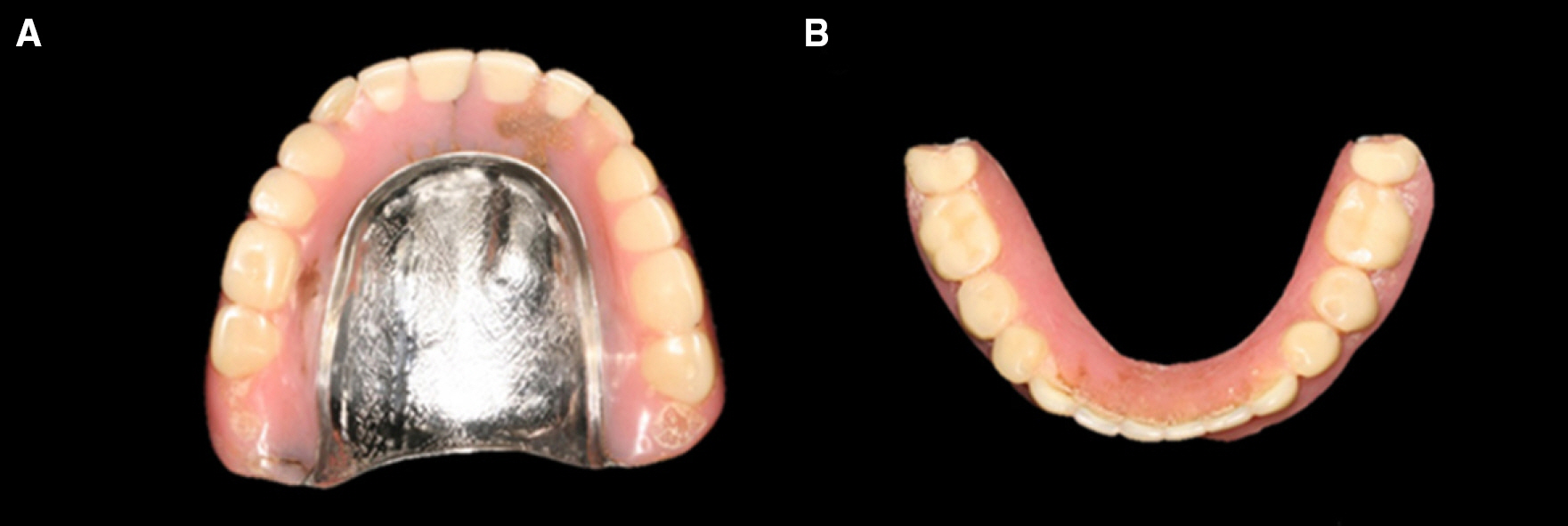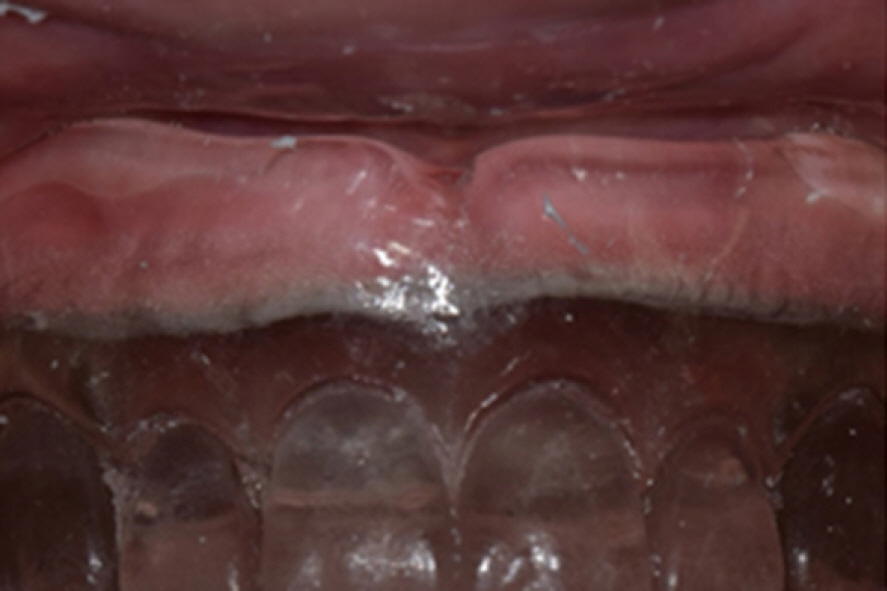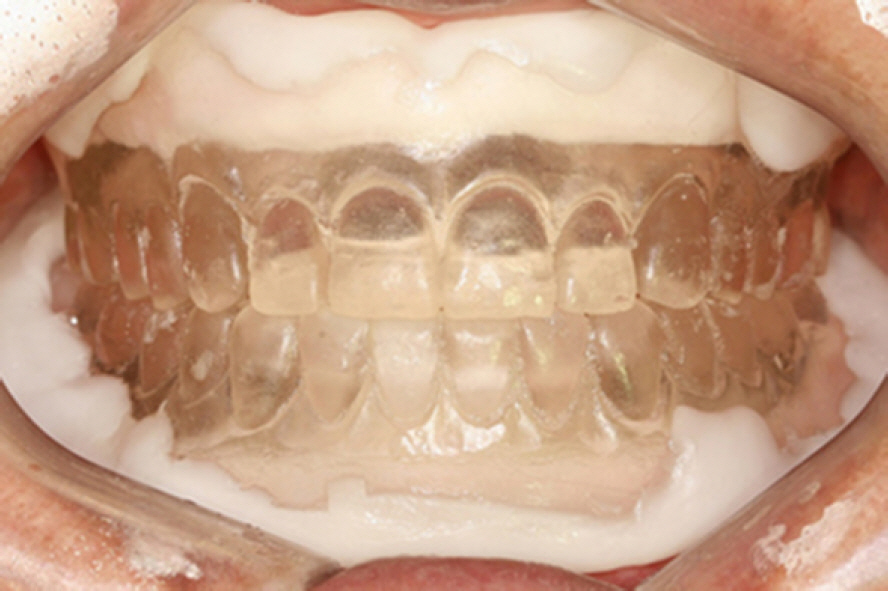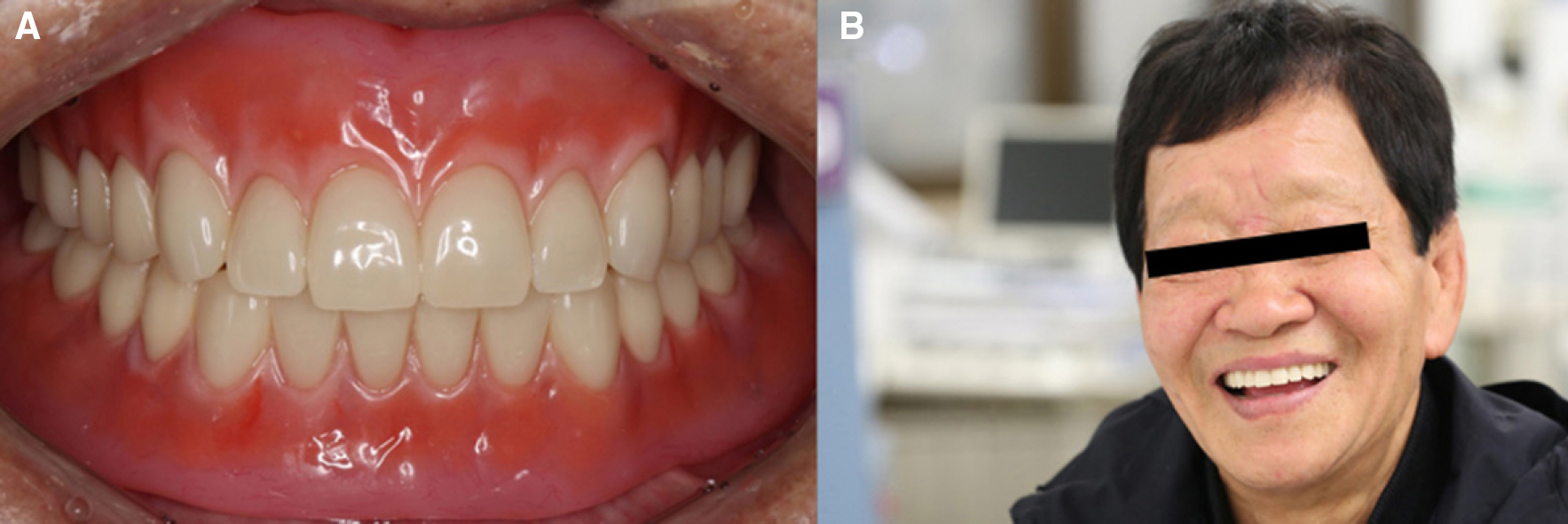J Korean Acad Prosthodont.
2015 Jul;53(3):250-255. 10.4047/jkap.2015.53.3.250.
Approach to complicated fully edentulous case: from the diagnosis to the definitive denture
- Affiliations
-
- 1Department of Prosthodontics, School of Dentistry, Kyung Hee University, Seoul, Republic of Korea. ahranp@khu.ac.kr
- KMID: 2195256
- DOI: http://doi.org/10.4047/jkap.2015.53.3.250
Abstract
- In fully edentulous cases, which are accompanied by severe residual ridge resorption and impairment of supporting tissues of complete dentures, proper diagnosis and systemic treatment planning are required for the improvement in retention, stability, and support of prosthesis. Provisional restoration, while it is unfamiliar in complete denture restoration, can be used as a valuable tool, which makes possible to evaluate the stability of complete dentures and receive feedback from patients in complex clinical situations. In this case, a provisional denture was used to improve stability of impression, polished, and occlusal surfaces of complete denture, and to consider esthetic requirements before final denture construction. The result was clinically satisfactory in terms of functional and esthetical aspects.
Keyword
Figure
Reference
-
1. Galindo D, Soltys JL, Graser GN. Long-term reinforced fixed provisional restorations. J Prosthet Dent. 1998; 79:698–701.
Article2. Lytle RB. The management of abused oral tissues in complete denture construction. J Prosthet Dent. 1957; 7:27–42.
Article3. Lytle RB. Complete denture construction based on a study of the deformation of the underlying soft tissue. J Prosthet Dent. 1959; 9:539–51.4. Chase WW. Tissue conditioning utilizing dynamic adaptive stress. J Prosthet Dent. 1961; 11:804–15.
Article5. Pound E. Conditioning of denture patients. J Am Dent Assoc. 1962; 64:461–8.6. Razek MK. Assessment of tissue conditioning materials for functional impressions. J Prosthet Dent. 1979; 42:376–80.
Article7. McGarry TJ, Nimmo A, Skiba JF, Ahlstrom RH, Smith CR, Koumjian JH. Classification system for complete edentulism. The American College of Prosthodontics. J Prosthodontics. 1999; 8:27–39.8. Slade GD. Derivation and validation of a short-form oral health impact profile. Community Dent Oral Epidemiol. 1997; 25:284–90.
Article9. Douglass CW, Shih A, Ostry L. Will there be a need for complete dentures in the United States in 2020? J Prosthet Dent. 2002; 87:5–8.
Article10. Szabo ′ G, Kende D, Marada G, Szentpé tery A. Quality of life and prosthodontics. Fogorv Sz. 2006; 99:91–8.
- Full Text Links
- Actions
-
Cited
- CITED
-
- Close
- Share
- Similar articles
-
- Fixed prosthesis restoration in edentulous patient fully implanted without considering definitive prosthesis: A case report
- Full mouth rehabilitation of an edentulous patient using maxillary complete denture and mandibular implant supported fixed prostheses: a case report
- Comparative analysis of case series for the prosthetic rehabilitation of edentulous patients using suction denture
- The Implant Retained Overdenture by Locator Attachments on the Edentulous Mandible: A Case Report
- Implant-assisted removable partial denture in a maxillary edentulous patient: A case report










